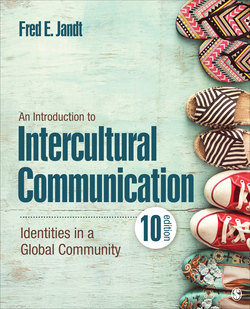Читать книгу An Introduction to Intercultural Communication - Fred E. Jandt - Страница 74
На сайте Литреса книга снята с продажи.
Multiculturalism
ОглавлениеDefinitions of intercultural competence grounded in communication have tended to stress the development of skills that transform one from a monocultural person into a multicultural person. The multicultural person is one who respects cultures and has tolerance for differences (Belay, 1993; Chen & Starosta, 1996). Using rhetorical sensitivity theory, it could be argued that the multicultural person is more likely to be a rhetorical sensitive.
As you read in Chapter 1, nation-states have become the predominant form of cultural identification. Most Western nation-states developed a single national identity in the 18th and 19th centuries. Increasing immigration has been perceived as a challenge to those single national identities. Multiculturalism concerns “the general place of minorities, programs designed to foster equality, institutional structures created to provide better social services, and resources extended to ethnic minority organizations” (Vertovec, 1996, p. 222); these became the way to respond to cultural and religious differences.
The Canadian Royal Commission on Bilingualism and Biculturalism is often credited with developing the modern political awareness of multiculturalism beginning with a preliminary report in 1965 (R. L. Jackson, 2010). Initially a policy to protect indigenous cultures, multiculturalism became an official Canadian policy in 1971; soon Australia and most member states of the European Union followed.
In the United States, the origins of multiculturalism date back as early as 1915 to philosopher Horace Kallen (1915, 1924/1970), who set forth the idea of cultural pluralism to describe the United States. He employed the metaphor of a symphony orchestra. Each instrument was an immigrant group that, together with other immigrant groups, created harmonious music. Kallen’s opponents included John Dewey (Westbrook, 1991), who warned that cultural pluralism supported rigid segregation lines between groups. Hollinger (1995) has described the issue as a two-sided confrontation between those who advocate a uniform culture grounded in Western civilization and those who promote diversity.
Several European heads of state have denounced multicultural policies: Former British prime minister David Cameron, German chancellor Angela Merkel, former Australian prime minister John Howard, former Spanish prime minister José María Aznar, and former French president Nicolas Sarkozy have all challenged their country’s multicultural policies. Several European states—notably the Netherlands and Denmark—have returned to an official monoculturalism (Bissoondath, 2002). Chancellor Merkel, for example, announced that multiculturalism had “utterly failed” (Weaver, 2010).
The same concern that multiculturalism has failed exists in the United States. Increased immigration and international terrorism and domestic terrorism have led to renewed pressures against multiculturalism. In April 2013, 3 people were killed and 264 injured when two bombs exploded at the Boston Marathon. The FBI identified two suspects, brothers Tamerlan and Dzhokhar Tsarnaev. Although they had never lived in Chechnya, the brothers identified as Chechen. Their family emigrated in 2002 and applied for refugee status. Both spoke English well. Tamerlan enrolled in a community college and married a U.S. citizen. He was quoted as having said that he “didn’t understand” Americans and had not a single American friend (Weigel, 2013). Dzhokhar became a naturalized U.S. citizen in 2012 and enrolled in a university program in marine biology. He was reported to be greatly influenced by his older brother. Some believe that the brothers were motivated by an anti-American, radical version of Islam that Tamerlan had learned in the Russian republic Dagestan or that they had learned in the United States.
Some columnists began to label the tragedy as an example of the failure of multiculturalism. Mike Gonzalez (2013), for example, asks how two refugee recipients of free education in the United States could not assimilate. Assimilation, Gonzalez asserts, does not connote coercion and loss of ancestral culture, but it does mean patriotism. (You’ll read more about assimilation in Chapters 10 and 11.)
